The team at Thoms Bros. loves to use our passion to enhance lifestyles and connect people to the outdoors. One great way to enjoy the outdoors is through cooking and eating in your yard. As we approach Memorial Weekend and the first unofficial summer weekend, grills will be firing up for maybe the first time of the year. The next several weeks we will explore and give you information on outdoor cooking.
Reprinted with modifications with permission from our supplier, Woodland Direct.
If you’re in the market for a new grill, then you probably know what a challenge it can be to narrow down the best options. After all, there are so many different models available, each with a set of features and optional add-ons to accommodate a variety of cooking styles.
To make your shopping journey easier, we’ve outlined the top seven things you’ll need to consider before purchasing your grill. But remember, our team of experts is available to answer any additional questions you may have and help you choose a grill with all the components you need!
#1 WHAT FEATURES DO I WANT?
There are a variety of components and appliances available that increase your grill’s versatility and make cooking more convenient. As you look for a grill, consider the kind of meals you’re going to make, so you can find a model with the features that will get the job done.
Give yourself the option to grill at night with LED backlit control knobs and internal halogen grill lighting.
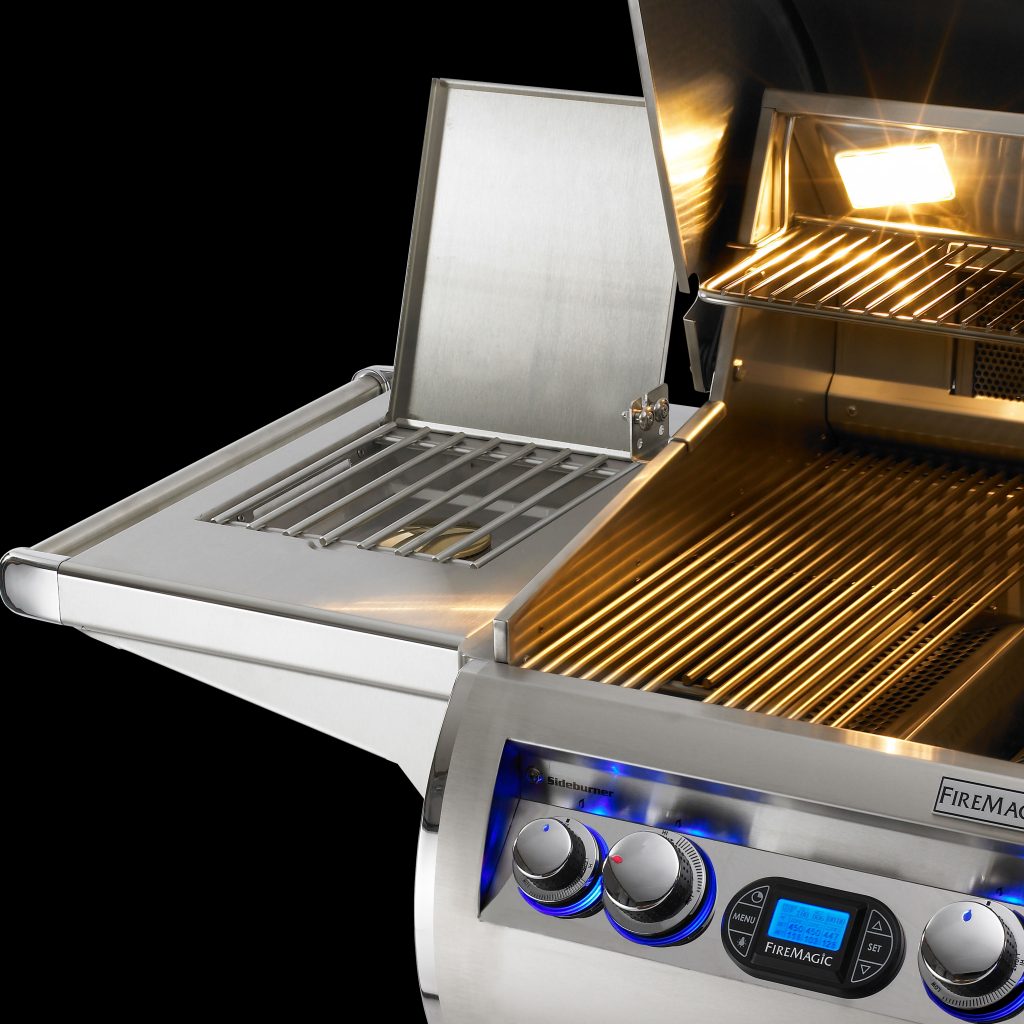
Side burners are gas-powered cooking surfaces that are attached to the side of a gas or hybrid grill. Adding a single or double side burners to your grill lets you prepare multiple courses simultaneously. Side burners are powered by a separate flame and heat source than your main grill grate. They’re also equipped with separate temperature control knobs to offer precise heat adjustment for simmering sauces and cooking foods that require temperature sensitivity.
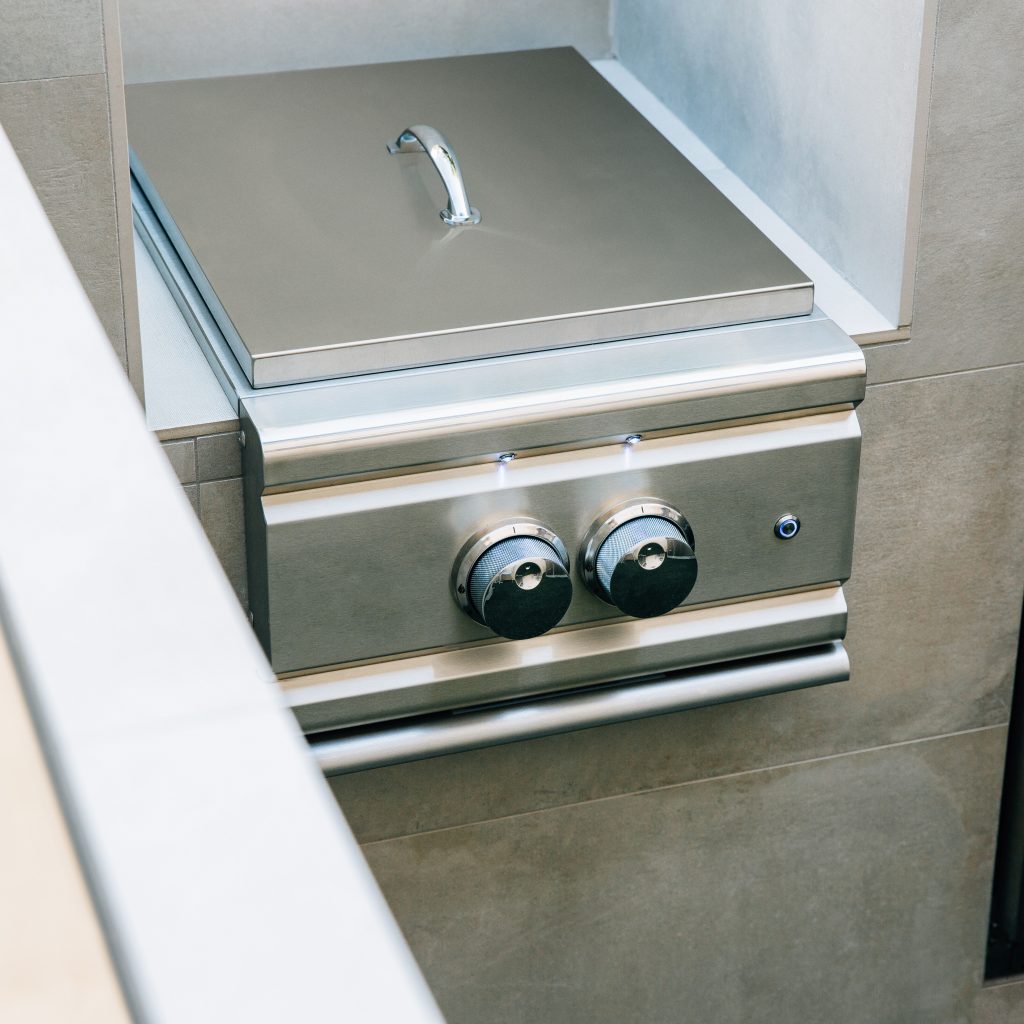
Infrared burners reach incredibly high temperatures for searing steaks and quickly warming up sauces. They use a radiant heat cooking system that heats food directly, instead of heating the air like traditional, convection-style systems found in gas grills. Infrared burners also provide an evenly heated cooking surface and reduce flare-ups caused by grease and food particles.
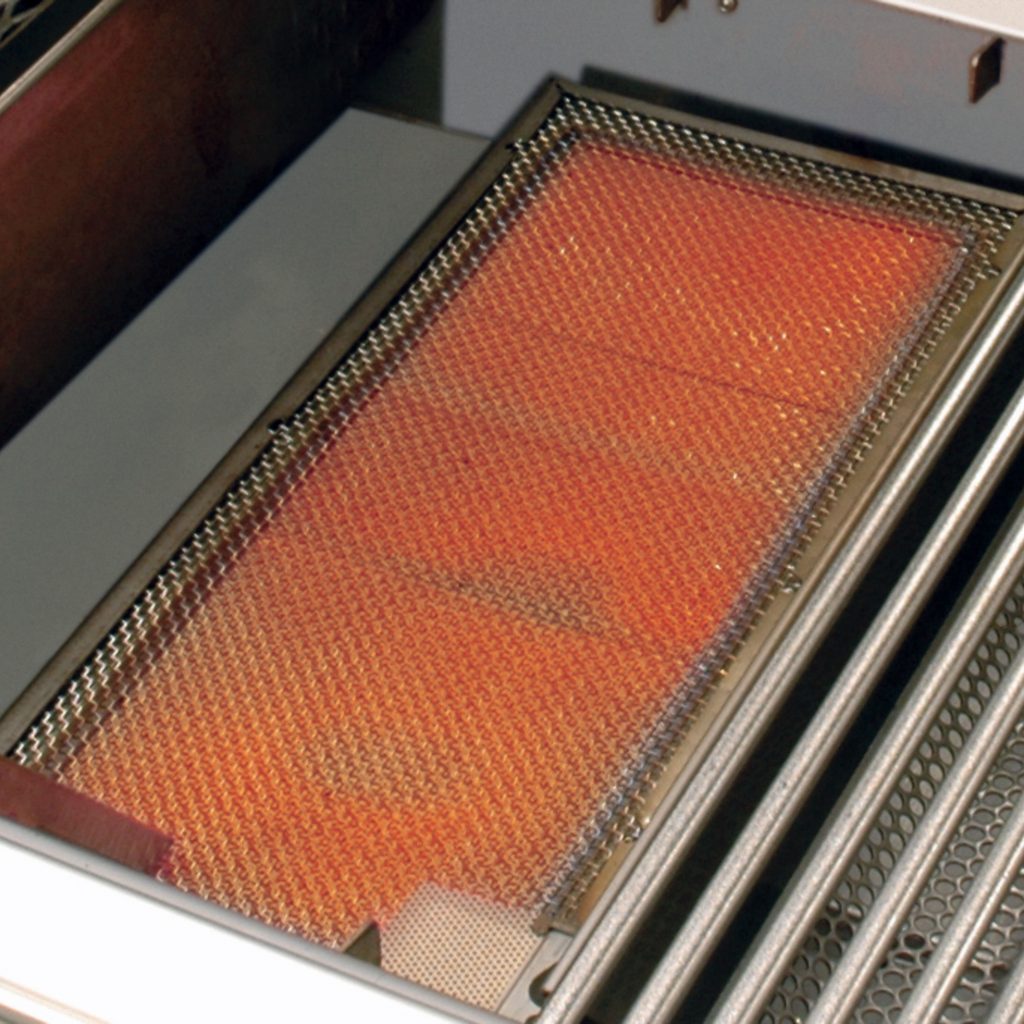
Similar to high-pressure burners, power burners are great for boiling and steaming because they offer more heat than standard gas side burners. You’ll be able to remove the center piece of your power burner to accommodate large pots, pans, and woks.
Cook large quantities of food, such as whole chickens, turkeys, tenderloins, or roasts by adding a motorized rotisserie system. The system is equipped with durable prongs that hold your food in place as it slowly rotates over the grill grates.
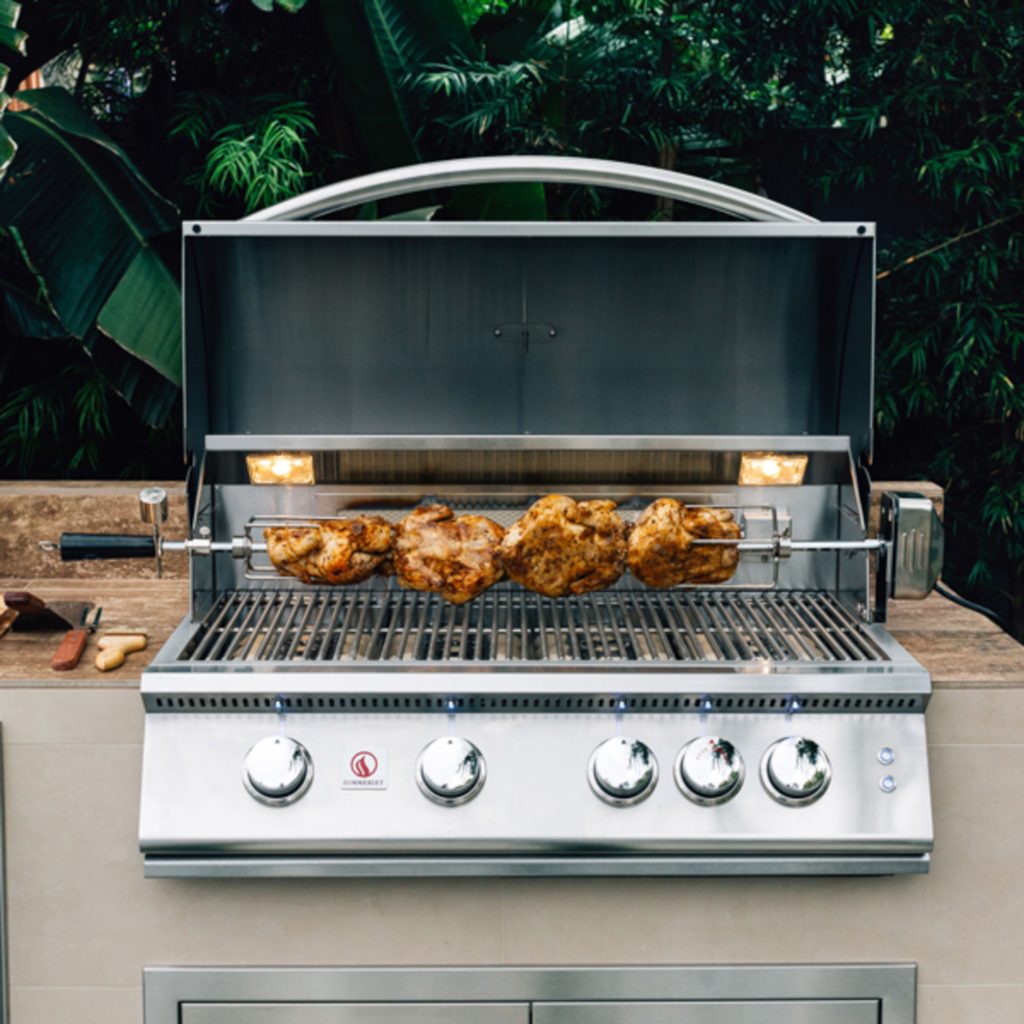
Make mouthwatering meals any time of the day with a griddle, which features a flat surface for cooking pancakes, eggs, bacon, veggies, stir fry, potatoes, and more. There are even side burner/griddle combinations available, which offer more room to experiment with your outdoor menu.
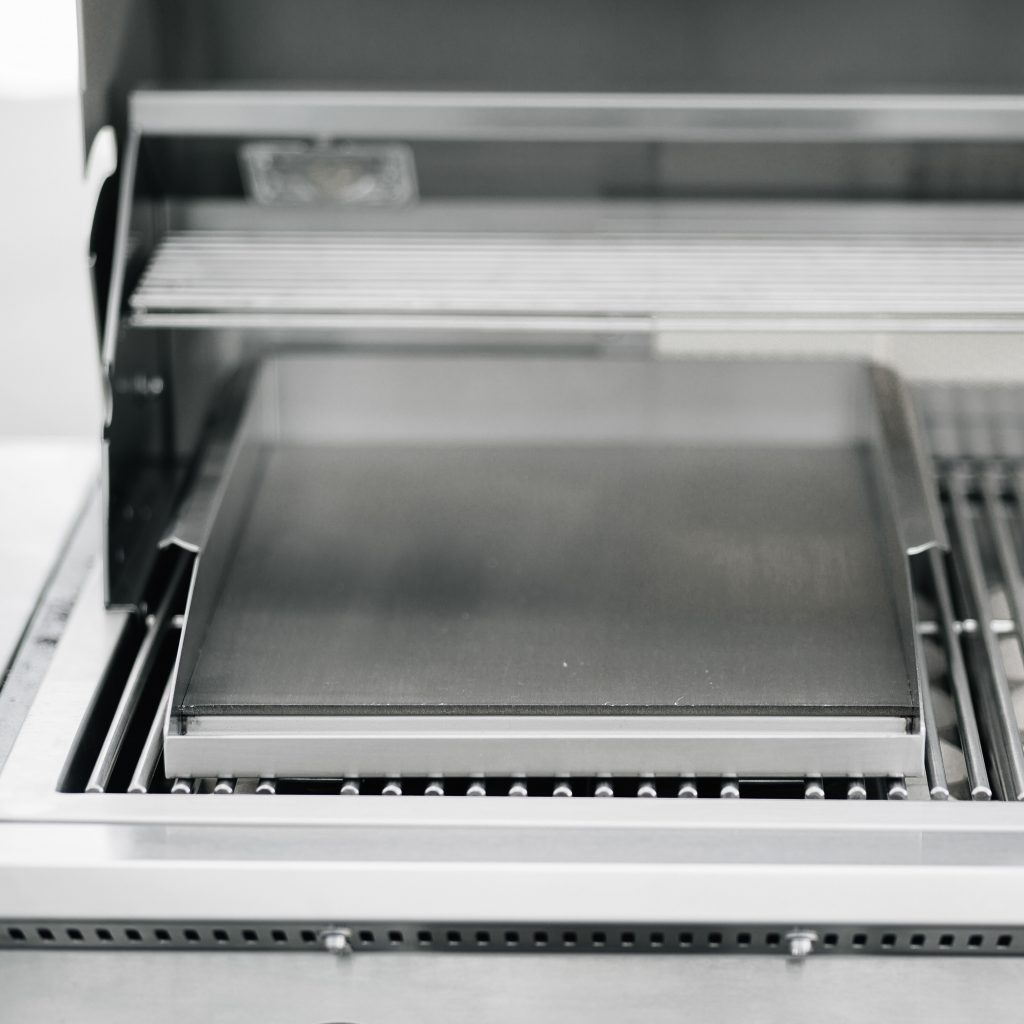
Accurately gauge how long your food will need to cook with a thermometer, which continuously monitors the internal temperature of your grill.
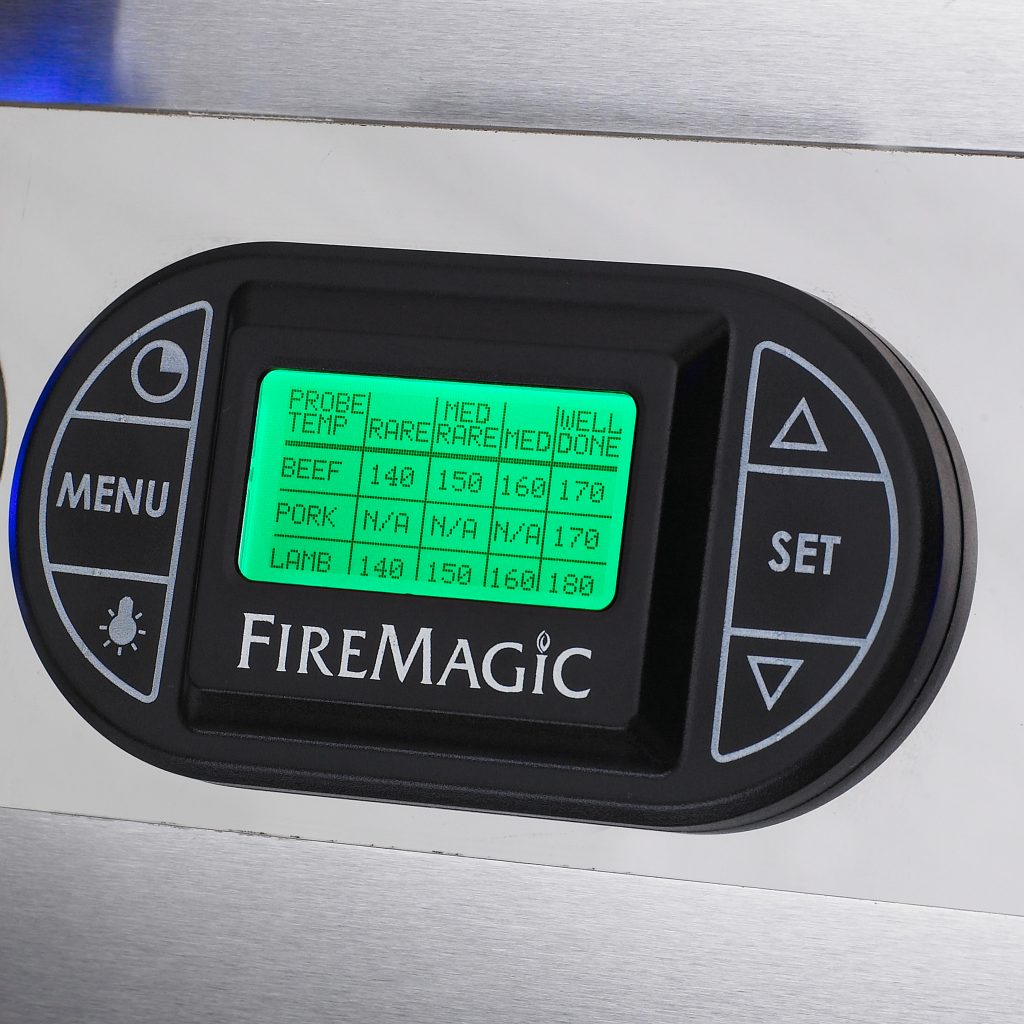
Smoker boxes make it possible to infuse your food with smokey flavor, even if you have a gas grill. Filled with prepacked burning chips, smoker boxes produce smoke that envelops your food during the grilling process.
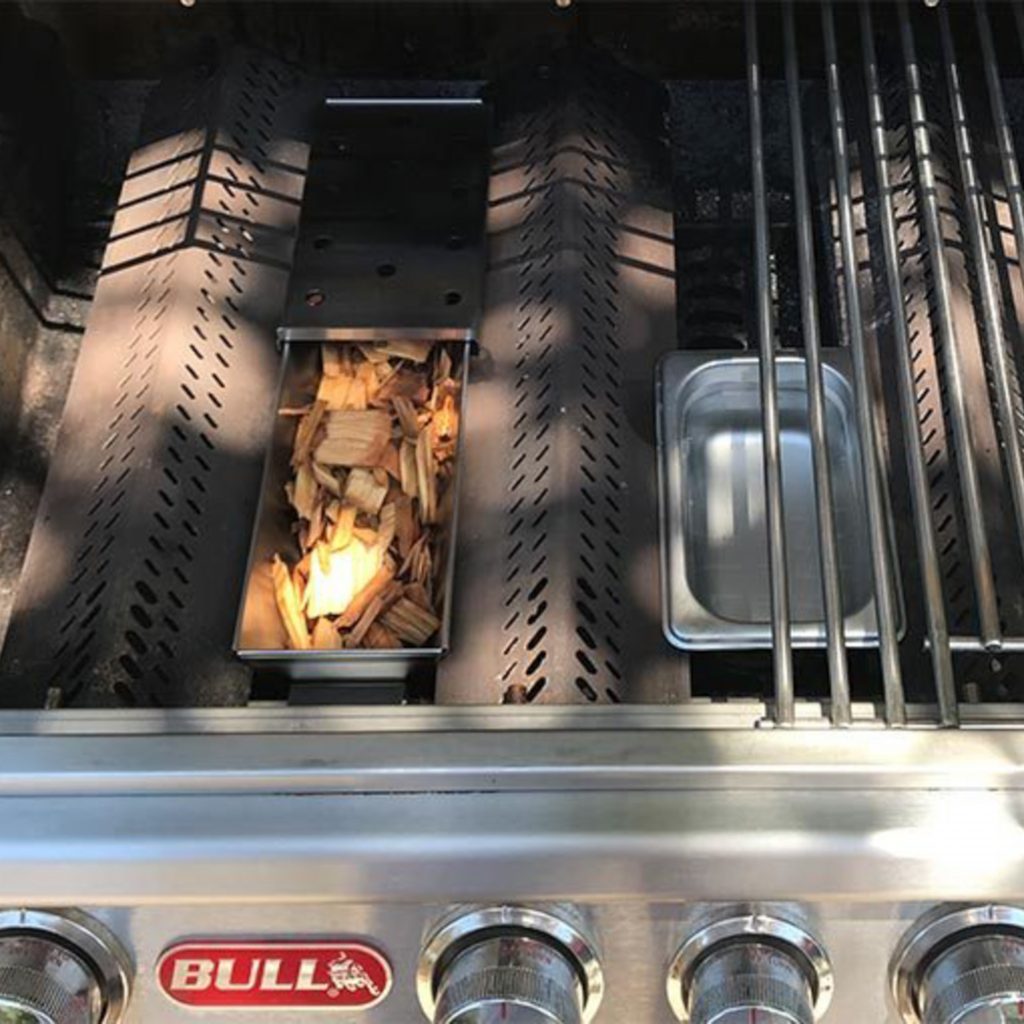
#2 WHAT KIND OF FOOD DO I WANT TO COOK?
The kind of grill you should get largely depends on what kind of food you like to cook.
If you’re a fan of low-and-slow cooking or infusing your meals with smokey flavor, then a charcoal or pellet grill is your best bet. If you enjoy quick searing and juicy steaks, search for a gas grill that’s equipped with a high-temperature infrared burner.
There are also hybrid grills, which accommodate charcoal, pellet, wood, and gas fuels, so you don’t have to choose between flavor and user-friendly operation. Some models have two separate fireboxes that can be used at the same time, while other hybrid grills make it easy to swap fuel-types whenever you’d like.
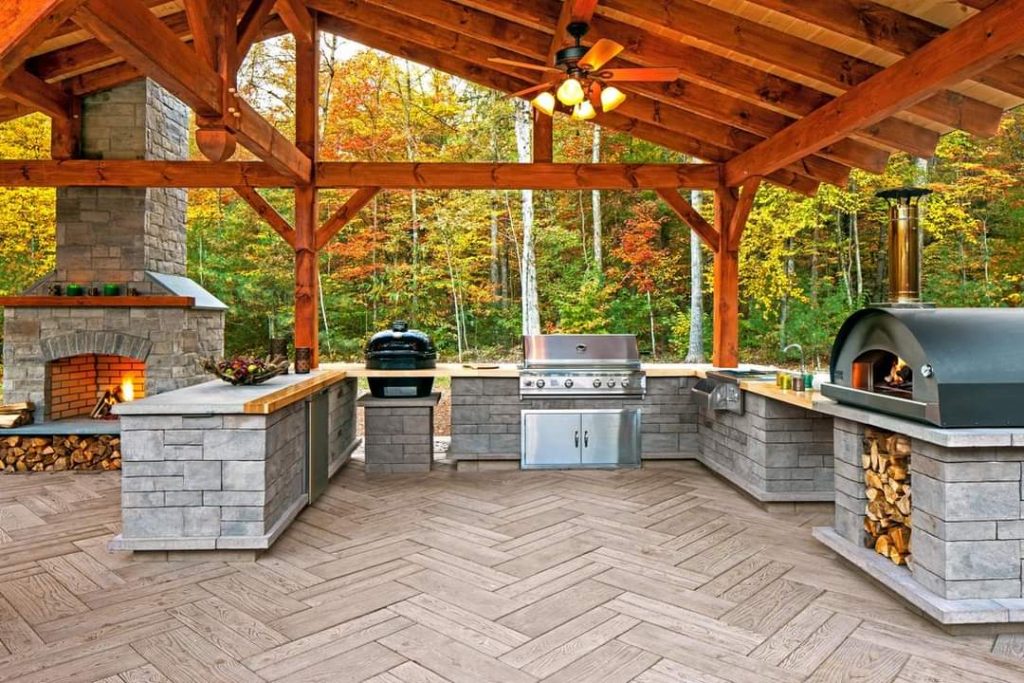
#3 HOW DO I WANT TO LIGHT MY GRILL?
If you choose a charcoal grill, you’ll light it manually. While charcoal grills produce incredible flavor, it takes them longer to heat up than gas grills. That means, if you host a party, you’ll have to plan your mealtime well in advance to make sure your grill is warmed up and ready to go when your guests get hungry.
Gas grills feature built-in ignition systems that provide immediate warmth. Instead of lighting your grill by hand, you’ll simply press a button or turn a knob to switch it on and off. With instant heat and adjustable temperate settings, gas grills are the best choice for those who anticipate large gatherings.
If you go with a gas grill, you have a few ignition options to choose from, including match-lit, hot surface, flame thrower, continuous spark, and single spark.
Match-lit
Match-lit burners are ignited manually using a lighter or match after you turn on your fuel source.
Hot Surface
Hot surface ignitors are equipped with a heating element that relies on electricity to warm up, just like an electric stove. You’ll need a supply of electricity in your outdoor space for your hot surface ignition to operate.
Flame Thrower
Flame Thrower ignitions feature a piezoelectric ignitor that provides a constant stream of fuel for the burner. Piezo ignitors don’t require an electrical connection.
Continuous Spark
Continuous spark ignitors generate constant sparks to keep your grill lit with an electrode that’s attached to an ignition rod placed near the burner. With this ignition, you’ll need batteries or a supply of electricity in your outdoor space.
Single Spark
Single spark systems are similar to continuous spark ignitions, but instead of emitting constant sparks, they produce just one spark using a piezoelectric ignitor. Single spark ignition systems don’t require an external power source.
#4 HOW MUCH COOKING SPACE WILL I NEED?
There are grills available in every size imaginable, from tiny, tabletop units to extra-large, eight-burner models. When choosing your grill size, first ask yourself: Are you a casual griller who prepares food for a small household, or do you like to cook for a crowd?
If you don’t grill that often or typically make simple meals for four or less people, a small grill with two burners and a 400-500-square-inch cooking surface will do the job.
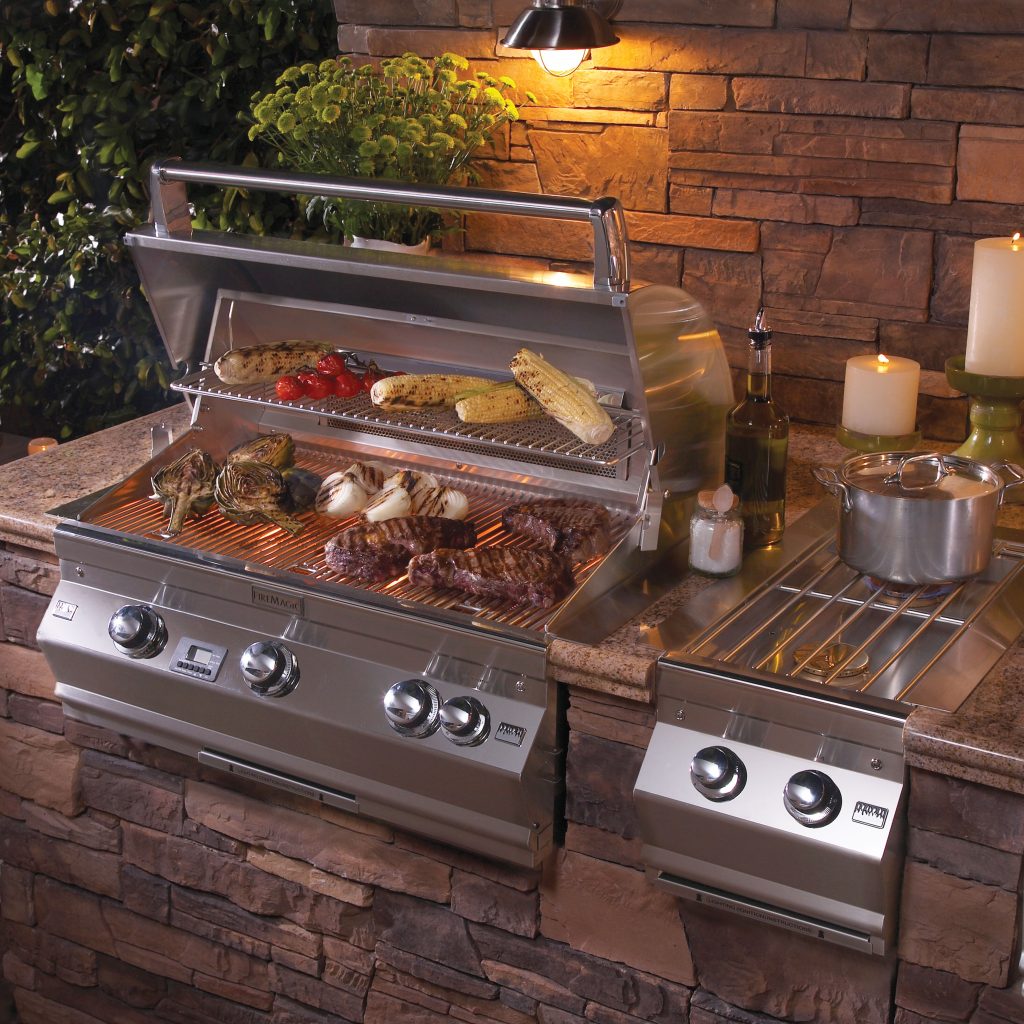
For those who grill frequently and like to experiment with different cooking methods, you’ll want to look for a medium-sized grill with up to four burners and a cooking surface of 500-600 square inches. With more cooking space, your grill can accommodate more than one heating zone, so you can simultaneously sear, simmer, and warm-up your food.
If you’re an experienced griller who often enjoys preparing multi-course meals for multiple people, large and extra-large grills are the best option. Large grills have a 600-700-square-inch cooking surface and more than four burners, while extra-large grills feature an impressive 800-1,000-square-inch cooking surface and can include up to eight burners!
Both large and extra-large grills typically come with luxurious upgrades, such as side burners, infrared burners, rotisserie systems, LED lighting, and extra storage space.
#5 DO I NEED EXTRA STORAGE?
Typically, two access doors conceal a storage compartment directly underneath your grill, which houses the Propane tank and drip tray.
If you build a full outdoor kitchen island, you’ll be able to incorporate a variety of storage options, such as an outdoor refrigerator, a beverage center, trash and recycling receptacles, pull-out drawers, and condiment trays.
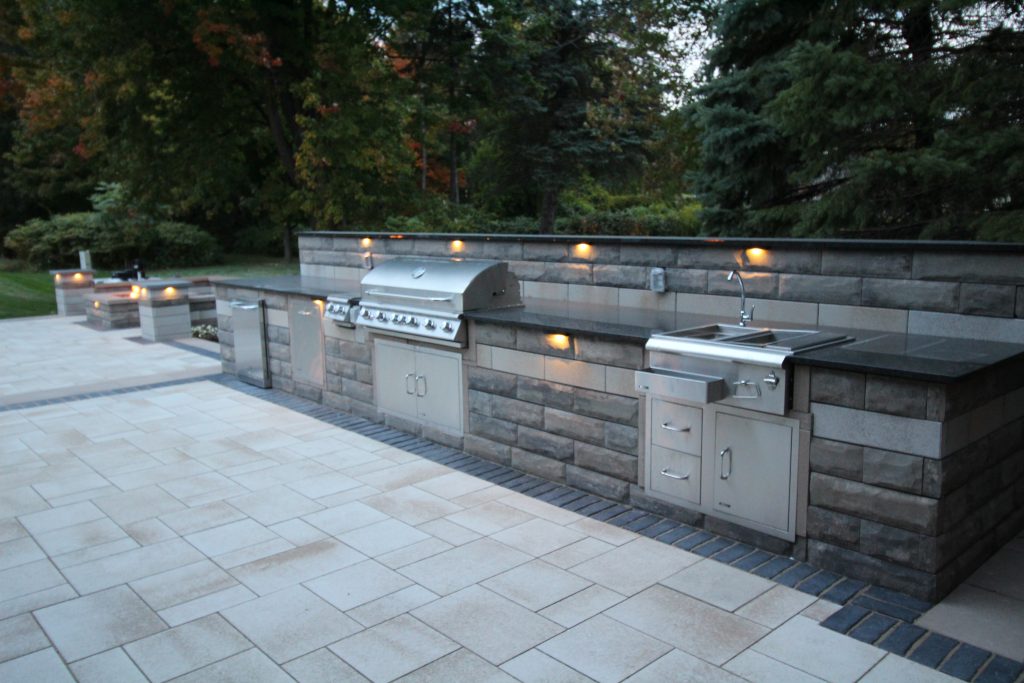
With an outdoor kitchen island, you can also create a designated entertainment area, complete with a bar, sink, and outdoor-rated TV.
If you only need enough storage space for basic items, like grilling utensils and ingredients, or if you’d like to make your cooking area mobile, consider investing in a grill cart.
Some carts directly attach to your grill, while others serve as separate prep stations. Either way, you’ll have more room to cook, store your grilling accessories, and present your side dishes, condiments, and drinks.
#6 HOW MUCH DO I WANT TO SPEND?
When you’re looking for a grill, consider how often you plan to use it, the climate you live in, and what kind of materials it’s made of.
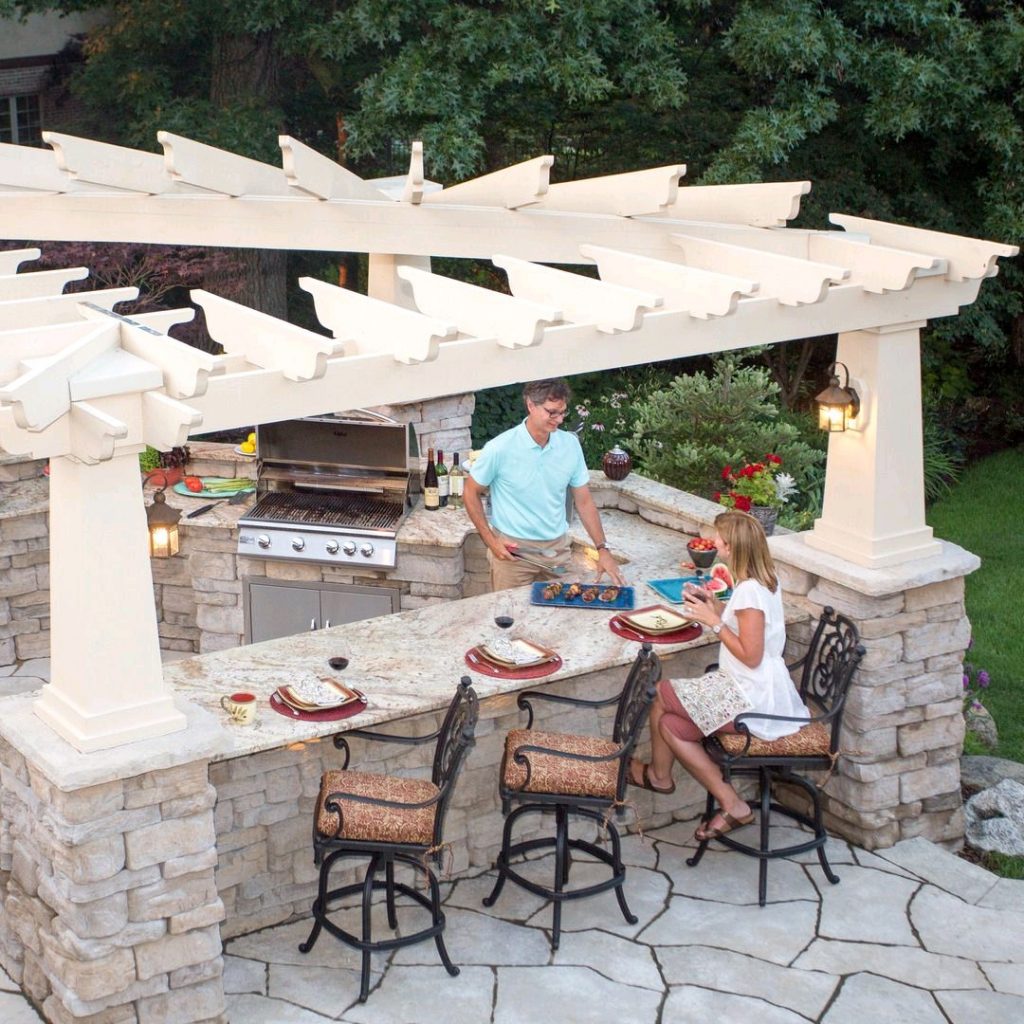
If you plan on grilling basic meals, like hot dogs and hamburgers, there’s no need to invest in a large, expensive grill with fancy features, because you’ll end up using more fuel than you need.
You can find simple grills made of inexpensive materials, such as aluminum, metal, and cast iron that are ideal for homeowners who only pull their grills out occasionally and have a covered space to store them. However, these grills aren’t suited for frequent or long-term use and won’t last in harsh weather.
If you grill often, you’ll need a reliable stainless steel model that stands the test of time. These grills will cost a bit more upfront, but they’re rust-resistant, durable, and easy to clean, making them well worth the investment.
We also recommend purchasing a grill that has a dual-layer or double-lined stainless steel hood, which helps keep all the heat inside your grill for more efficient cooking.
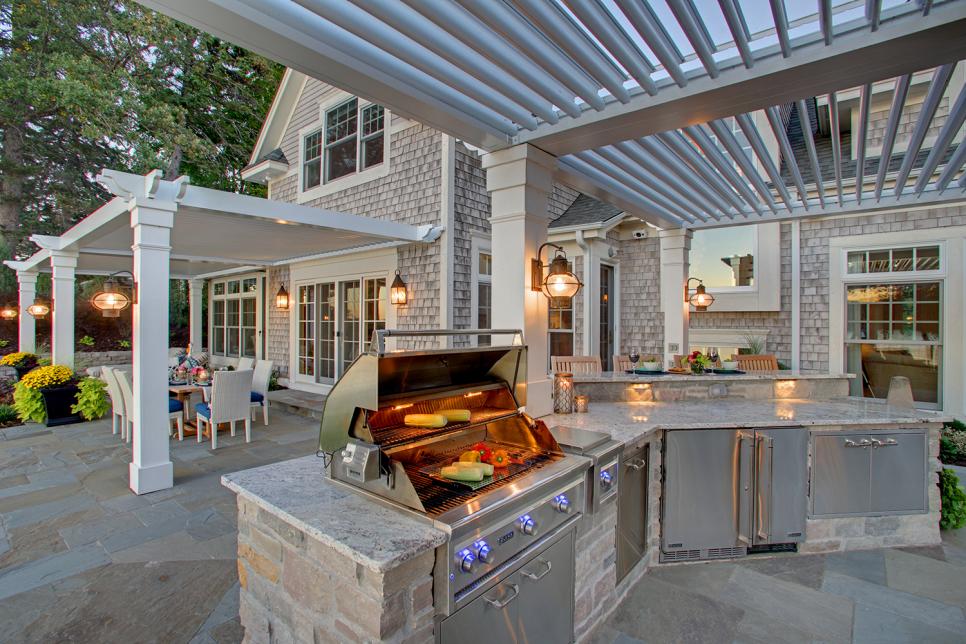
#7 HOW CAN I MAINTAIN MY GRILL?
Whether you purchase a gas grill or choose a charcoal model, there are a few important maintenance steps you’ll need to take to ensure your grill stays in great working condition.
Charcoal Grills
Every time you’ve finished cooking on your charcoal grill, wipe down the inside of your grill lid while it’s still warm to remove any grease splatters. Then, wait for the ashes and used charcoal chunks to cool off and dump them out of the ash receptacle and charcoal tray. Consider keeping an ash bucket handy in your cooking space to make the clean-up process more convenient.
Every couple of weeks, we recommend cleaning your grill thoroughly, inside and out. Remove the grill grates and soak them in warm, soapy water. Then, use a grill brush to clean off any residue. After you let your grill grates dry, re-oil them to prevent rusting.
At the end of the season, make sure your charcoal grill is protected by purchasing a fitted, weatherproof cover.
Gas Grills
Before each cooking session, preheat your gas grill completely to clean and disinfect the surface.
After you’re done grilling, crank the heat all the way up to burn off any drippings and grease left behind. You’ll also want to use a grill brush to scrape off stubborn food scraps. This ensures a clean cooking surface when you’re ready to use your grill again.
To preserve your gas grill’s performance, do a thorough bi-weekly cleaning of the inside and outside with warm, soapy water. You’ll also need to empty the grease from your drip tray to avoid the risk of a fire.
When the season ends and you’re ready to shut down your outdoor kitchen, wipe down the inside and outside of your grill, including the grates. Then, store your grill covered, with the Propane tank or gas line disconnected.
Protect your grill during the off-season with a weatherproof cover made of breathable material, such as polyester. If you live in a humid climate or near the ocean, only cover your grill during periods of harsh weather, as leaving it covered for a long stretch of time can trap salty or moist air inside and cause your grill to rust.

